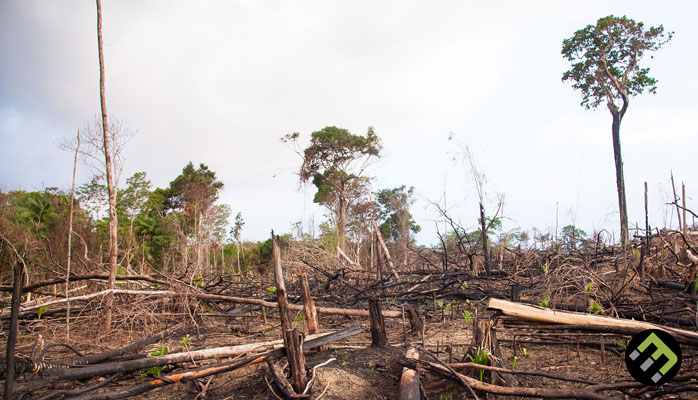Deforestation and Disease Dynamics

For the past few years, the conversation over disease has exponentially increased. Consider the Zika virus, preceded by the Ebola epidemic, succeeded by the new COVID19 super virus that has led to a global shut down.
Scientists have, for the past few years, screened and found vaccines, medications, and treatments to help humanity advance their lifespan. However, the battle has become a constant back and forth as these diseases evolve as well to combat the treatments. This has led many to consider what a preventive solution could be.
After numerous rigorous investigations, a shocking but all too familiar foe seems to be one of the major causes of the exponential growth and spread of certain diseases – deforestation. The chopping of trees to create more vibrant urban landscapes might temporarily improve human life, but scientists have also pinned the activity down as a massive influence on disease dynamics.
How deforestation impacts disease evolution
For society to thrive, it must first survive. We know deforestation has played an immense role in the change of global climate, the increase in natural disasters like landslides, and erratic weather patterns, and now, it is proven that trees protected and cultivated ecosystems to survive diseases. It is no understatement to consider that the protective layer of our ecosystem has slowly and meticulously been eroded over several lifetimes of unfettered development.
Possibly in the most significant and most impactful way, forests and jungles have been crucial for our society’s respiratory functions. Not only does it regulate and cycle the emission and circulation of oxygen and carbon dioxide, but it also plays a part in keeping harmful gases in the atmosphere in check.
The link between air quality and respiratory diseases are conclusive. Those in urban, polluted areas are at a more considerable risk than those who are surrounded by greenery. Another aspect to consider is the world climate – the more forests that are lost, the higher the likelihood that the environment in that area changes in an adverse manner. Humidity is lost, the temperature rises, and rains could carry harmful chemicals. The most alarming analysis of deforestation shows that it directly increases the microbial transfer of pathogens from tissues from both living and dead organisms.
One of the most lethal developments of a novel virus was one that began in just before the beginning of the new millennium. The Nipah virus has continued to ravage Southeast Asia with its death toll in the thousands. The novel virus developed when fruit bats from Indonesia relocated to Malaysia in a bid to escape the smoke generated from the burning away of their native forests. The region began to report pigs and humans falling sick from the new disease. With no vaccine or treatment, the Nipah virus continues to pose a threat in the region. [1]
The Nipah virus is just one of the examples of how diseases that were previously confined to animals are now spilling into human settlements as more and more forests are being cleared.
The undeniable link
One of the most well-documented links between the spread of infectious diseases and deforestation is the case of malaria. While the disease was being effectively curtailed in Brazil to its lowest figures in 1960, the disease has seen a resurgence in the new century. Extensive studies by epidemiologist Amy Vittor suggested that deforestation of the Amazon created habitats along the edge of the forest that were ideal for the Anopheles mosquito, which carries and transmits malaria. [2]
A data study by Andy MacDonald, a disease ecologist, and Erin Mordecai later confirmed this theory. Their study was published in the Proceedings of the National Academy of Sciences and is widely accepted by the broad scientific community.
According to the study, for every 10% increase in loss of forests results in a 3% increase in malaria cases. This type of link between the data types is also observed in Sabah, which is part of the Malaysian Borneo forest.
Novel diseases
Diseases like Nipah, HIV, and Ebola have their origins in forest-dwelling species. Since the animals have also evolved along with the diseases, they remain largely unaffected. The diseases are transmitted from animals to other animals. However, due to large-scale environmental destruction like forest and wildfires, and encroachment of forestland, these diseases have jumped to humans with disastrous consequences.
Humans have not had the opportunity to evolve with these diseases, which makes us particularly susceptible to these infections. The multi-billion-dollar animal industry, which requires large tracts of land, also puts us in danger of consuming infected animals. According to a 2015 study by Ecohealth Alliance, a New York-based non-profit, one in three emerging diseases can be linked back to changing land-use patterns, which includes deforestation.
What can we do?
The simple answer would be to protect our existing forests and grow new ones. Of course, the ground reality of such proposals is much more complicated. The situation is multi-faceted with implications that cross several aspects of human society.
To be able to protect and rebuild our forests, we will have to reevaluate and reenergize the way we conduct our businesses. World governments will need to work with scientists and industry experts to develop new industries that do not require extensive land tracts or resources from fragile forests. Societies around the world will need to adjust to a new world order that is not fueled by consumerism. Instead, we must put forth our efforts towards creating and fostering a new paradigm that focuses on a harmonious balance with nature.
Already we are seeing the rise of new entrepreneurs and businesses that hold these principles as their central ethos. EcoMatcher, too, helps industries develop initiatives around tree planting. Recognizing the need of the hour for our planet will be one of the most crucial steps necessary for a healthy and vibrant future.

